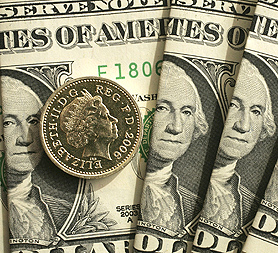UK economic growth overshadowed by US data
The US Federal Reserve says it will “do all that it can” to prevent a double-dip recession as US growth is revised sharply lower. David Blanchflower explains how this threatens UK economic growth.

Mr Blanchflower, former Bank of England policymaker, said all the evidence from 2008 shows that a few months after the US went into a deep recession, the UK followed. The UK economy posted its best quarterly performance in almost a decade today. Output in the UK grew by 1.2 per cent during the second quarter of 2010, the Office for National Statistics said, surpassing previous estimates of 1.1 per cent gross domestic product (GDP) growth.
However, casting a shadow over growth prospects, economists have warned that future growth will not only be hit by government cuts and VAT hikes – but it largely relies on US economic recovery.
Mr Bernanke said today that the economic recovery in the US had softened more than expected and revealed that the Fed is ready to take further steps if needed to spur the stumbling economy.
The Fed chairman said economic growth during the past year has been “too slow”, while unemployment in the US was “too high”.
“The committee is prepared to provide additional monetary accommodation through unconventional measures if it proves necessary, especially if the outlook were to deteriorate significantly,” he said in a speech at Jackson Hole.
Mr Blanchflower told Channel 4 News that policy makers will respond to Mr Bernanke’s comments “and do exactly the opposite to what they are doing in the UK – put more stimulus in, not less”.
He added: “The worry is that talk of austerity, talk of public spending cuts, has actually scared the (UK) consumer and all the data are consistent with that from the moment the new coalition government came in consumer confidence fell.
“And if the world economy slows then these spending cuts are really going to impact growth. And the markets actually care more about growth than they do about deficits – so if the UK economy starts to slow and you start to cut that’s very bad.”
The better-than-expected UK growth reported today was thanks mainly to the construction sector, where output surged 8.5 per cent during the three months – having previously reported a 1.6 per cent fall.
Industrial production ticked up 1 per cent, while the service sector crept up 0.7 per cent. Meanwhile, household consumption rose by 1.1 per cent – the fastest rate since the first quarter of 2008 – and government spending clocked a 0.3 per cent rise, down from 1.5 per cent in the previous quarter.
The boom in construction is the largest on record since 1982, but was largely ear-marked as a one-off – as work postponed during the harsh winter of the first quarter was finally given the go-ahead in the second quarter.
Plus, few economists expect the upbeat quarter – the strongest GDP growth since the first quarter of 2001 – to be repeated in the near-term, with the debate now focused on if the UK will slow towards its trend of around 0.6 per cent, or slump in the face of a global downturn.
Firms also increased inventory levels for the first time since Q3 2008, but longer-term investment to boost productivity fell by a sharp 2.4 per cent and the excess of imports over exports barely narrowed.
Samuel Tombs of Capital Economics said “While the second estimate of UK GDP in Q2 confirms that the economy expanded at a pretty robust pace in the second quarter, the figures cast doubt on the sustainability of the recovery.
“Quarterly GDP growth was nudged up from the initial estimate of 1.1 per cent to 1.2 per cent, largely as a result of faster growth in the construction sector than originally assumed.
“However, the expenditure breakdown of GDP shows that the recovery is built on very fragile foundations. Household and government spending did both post solid rises of 0.7 per cent quarter-on-quarter and 0.3 per cent quarter-on-quarter respectively, but both sectors are very unlikely to maintain such growth rates as the fiscal squeeze kicks in over the coming quarters.”
Financial markets have increasingly been pricing in a weak growth outturn for 2011 due to a lacklustre US economy and looming public spending cuts across Europe, not least in Britain where most government departments’ budgets are set to fall by a quarter over four years.
Ed Balls, Labour leadership contender, warned in a speech on Friday that Britain faced an economic “hurricane”.
The set of figures came just hours ahead of US GDP data, which revealed that growth had slowed more sharply than initially thought. Despite beating analysts expectations of a 1.4 per cent fall in GDP, official data showed a rise of 1.6 per cent – down from the 2.4 per cent rise previously estimated by the Commerce Department.
Growth was stifled by a 32.4 per cent surge in imports – the largest since the first quarter of 1984 – which dwarfed the 9.1 per cent rise in exports.
“There is no doubt we are losing momentum in the economic recovery,” said Robert Dye, senior economist at PNC Financial Services in Pittsburgh.
“But if we define recession as two or more consecutive declining quarters of GDP, I think we are not going to go there.
“We are going to see a pattern where we may have declining GDP in one quarter followed by smaller gains in the next quarter, bouncing along the bottom as it were,” Mr Dye said.
The progress of the UK’s economy will depend on the US, where fears have risen in recent weeks that the world’s biggest economy could be facing a double-dip recession.